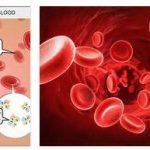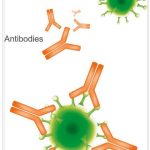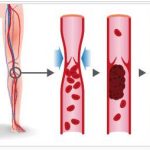Protein C is part of a complex system that regulates the blood clotting process. It is a vitamin K dependent protein. In the context of haemostasis, it controls the blood coagulation process. In the case of a protein C deficiency, this can be disturbed.
What is Protein C Deficiency?
Protein C deficiency has a major impact on blood clotting. Protein C has the task of deactivating the blood clotting factors FV and FVIII. If this deactivation does not occur, blood clots will form. Protein C basically has several functions in the organism. It has an anticoagulant effect. See gradphysics for Legionnaires’ Disease in English.
This means it has an inhibitory effect on blood clotting. Furthermore, it even dissolves blood clots because it also has a profibrinolytic effect. Finally, it also has anti-inflammatory properties. At the same time, it stabilizes the inner wall of the blood vessels and inhibits programmed cell death. The main task of protein C is to prevent the blood from clotting uncontrollably in uninjured areas in the event of an injury.
In the event of an injury, protein C is converted to activated protein C (aPC). This then forms a complex with protein S. Protein S is a cofactor of protein C. This complex represents the actual anticoagulant. A lack of protein C therefore results in increased formation of blood clots and thrombosis.
Causes
Protein C deficiency can be congenital or acquired. Severe congenital protein C deficiency is a very rare disease. This form of protein C deficiency is genetic and affects one in 200,000 newborns. The symptoms sometimes only become noticeable in young adulthood. In some cases, however, the fetus can already be affected, which can lead to thrombosis of the fetus and miscarriages.
The genetic defect can be homozygous or heterozygous. In the homozygous form, the clinical symptoms are more severe. Acquired protein C deficiency is caused either by reduced production of the protein as a result of liver disease or by its increased degradation, for example as a result of bacterial sepsis.
An acquired deficiency of protein C also occurs with coumarin treatment. Coumarin treatment is used to prevent clotting. Overdosing can lead to skin necrosis, which in turn causes protein C deficiency. Since vitamin K is a prerequisite for the formation of protein C, a vitamin K deficiency also leads to reduced protein C production.
Symptoms, Ailments and Signs
The severity of the symptoms of a protein C deficiency depends on the concentration of protein C in the blood. If its concentration is only slightly reduced, there are no complaints. When concentrations of protein C are greatly reduced, microthrombosis occurs, which clogs the smallest blood vessels in the skin and organs. The smallest bleeding occurs in the skin, which cannot be pushed away.
These are called petechiae. As the disease progresses, the petechiae merge into one another, forming a coherent large area. This process is called purpura fulminans. In the context of purpura fulminans, the skin areas affected by the micro-blockages die off. This is a very painful process, which can take an extremely unfavorable course.
The microthrombi cause tissue cells to die off in many other organs in addition to the skin. In the worst case, this results in multi-organ failure with a fatal outcome. The congenital protein C deficiency in newborns leads to increased thrombosis in the veins. Furthermore, these infants are also at risk for atypical thrombosis in the brain or intestine.
Diagnosis and course of the disease
If a protein C deficiency is suspected, the blood is examined for the concentration and activity of protein C as part of a blood test. First, the activity of the protein is determined. This should be between 70 and 140 percent. A protein C deficiency is already diagnosed at an activity below 70 percent.
However, if the protein has an activity that is below 20 to 25 percent, treatment should be initiated immediately to avoid severe symptoms or even death. Next, the protein C concentration is determined. However, this examination only makes sense if a reduced activity of protein C has already been determined.
The normal range for the protein C concentration is around two to six milligrams per liter. To clarify whether a congenital or acquired deficiency is present, the condition of the liver, the amount and type of medication taken and the vitamin K concentration are also examined.
Complications
In most cases, those affected suffer from impaired blood clotting due to the protein C deficiency. This has a very negative effect on the quality of life and can lead to various complaints and complications in the everyday life of those affected. Small hemorrhages usually occur directly on the skin. These are often associated with pain and cannot simply be pushed away.
The inner organs can also be affected by bleeding due to the protein C deficiency, so that in the worst case the patient can suffer organ failure. Thrombosis can also be discounted due to the deficiency. As a rule, protein C deficiency can be diagnosed relatively easily with the help of a blood test, so that early treatment of this disease is also possible.
If there is no treatment, the protein C deficiency can cause irreversible damage to the internal organs. The treatment itself is carried out with the help of medication and can alleviate the symptoms. However, those affected are usually dependent on lifelong therapy if causal treatment is not possible. Whether life expectancy will be reduced due to protein C deficiency cannot usually be predicted universally.
When should you go to the doctor?
Congenital protein C deficiency is diagnosed immediately after the child is born. Whether further visits to the doctor are necessary depends on the severity of the deficiency. In the case of mild symptoms, it is sufficient to give the child the necessary proteins intravenously. Serious illnesses can lead to thrombosis and other complications that require intensive care treatment. Acquired protein C deficiency manifests itself in symptoms such as exhaustion and malaise in the child. It can also lead to circulatory disorders and skin changes.
If these symptoms appear, a doctor should be consulted. Parents of affected children should consult the pediatrician. The actual treatment is usually carried out by a specialist in internal diseases. A nutritionist can also be consulted. Since protein C deficiency is a serious disease that is a major burden for parents and child alike, therapeutic support is important. Parents should contact the responsible doctor and keep in close contact with him during and after the treatment.
Treatment & Therapy
In the case of an acute lack of protein C, protein C must be administered directly via an infusion to avoid microthrombosis with possible organ failure. This treatment restores the microcirculation in the capillaries. This normalizes the acutely life-threatening condition.
Especially in infants with congenital protein C deficiency, this treatment method is the only way to prevent death. Rapid administration of heparin, another anticoagulant, overlaps the time of protein C deficiency. In the case of an acquired protein C deficiency, it is important to treat the triggering diseases such as underlying sepsis or liver diseases. Furthermore, drugs that inhibit the formation of protein C must be discontinued.
Prevention
Prophylaxis against protein C deficiency is not possible because the disease is either congenital or caused by the most severe, unpredictable disorders such as sepsis. However, some other underlying conditions (e.g. liver disease) could be prevented by a healthy lifestyle.
Aftercare
Whether congenital as a genetic defect or acquired through a disease event, follow-up care spans the entire lifespan of the patient. As part of the therapy, various holistic applications are used so that those affected can live as full a life as possible. This also applies if a causal therapy is hardly possible for various reasons.
Children and older patients in particular feel heavily burdened by the pain symptoms, so it is advisable for the affected person or parent to seek psychotherapeutic support. A self-help portal for exchange with like-minded people also offers important support and serves to exchange information. The disrupted blood formation can lead to blood clots, which require controlled medication.
Accountability for this demands a great deal of attention from caregivers and parents of children with protein C deficiency. After all, deficiencies in the patient must be recognized quickly in order to be able to react immediately with the correct medication. As a result, carers and parents are firmly involved in the aftercare and learn in detail how to deal with this syndrome.
Various relaxation techniques such as autogenic training or yoga should be used regularly so that those affected and their relatives can keep their mental balance and their own fitness in balance. A balanced diet with as little fat as possible and non-alcoholic drinks supports the patient’s body’s own defences.
You can do that yourself
Patients with a protein C deficiency must undergo lifelong therapy because, in the worst case, their disease can be fatal. The disease underlying the protein C deficiency must be found and treated. Even if a causal therapy is not possible, the symptoms can be alleviated with appropriate therapies.
Nevertheless, the protein C deficiency can be very stressful, especially if it leads to disturbed blood formation and the sometimes painful bleeding cannot be completely prevented. Contact with other sick people has proven to be helpful here. However, there are no self-help groups for protein C deficiency patients, as the disease is too rare for that. However, the self-help portal for rare diseases (www.orpha- selbsthilfe.de) can also provide the latest information and contacts here.
Parents of affected children must realize that mishandling their baby can be fatal. They must be able to recognize deficiencies in their child and give an anticoagulant immediately. This responsibility often weighs heavily on parents. They should receive appropriate training and psychological support. Relaxation therapies such as yoga, autogenic training or progressive muscle relaxation according to Jacobson are also advisable.








